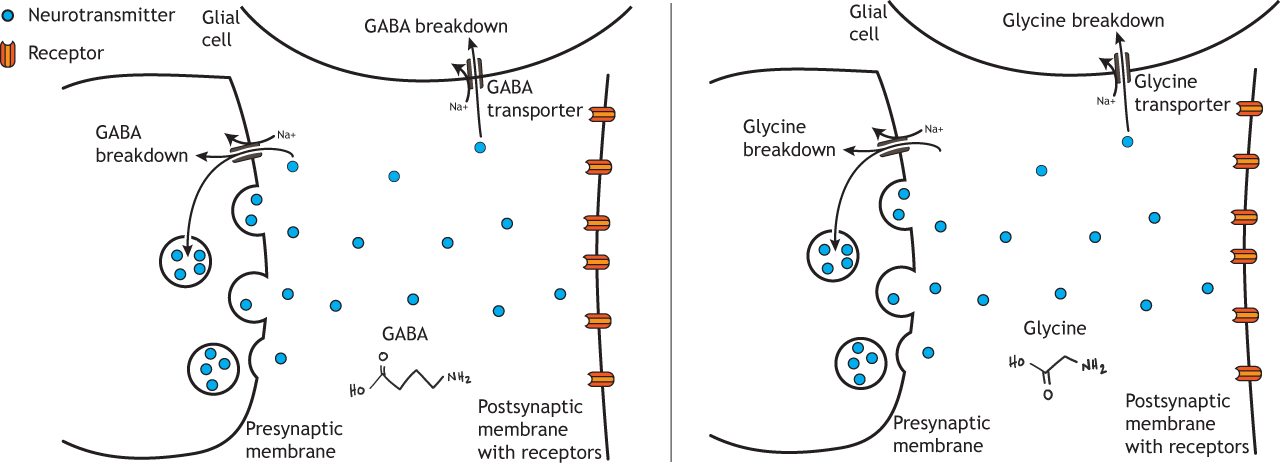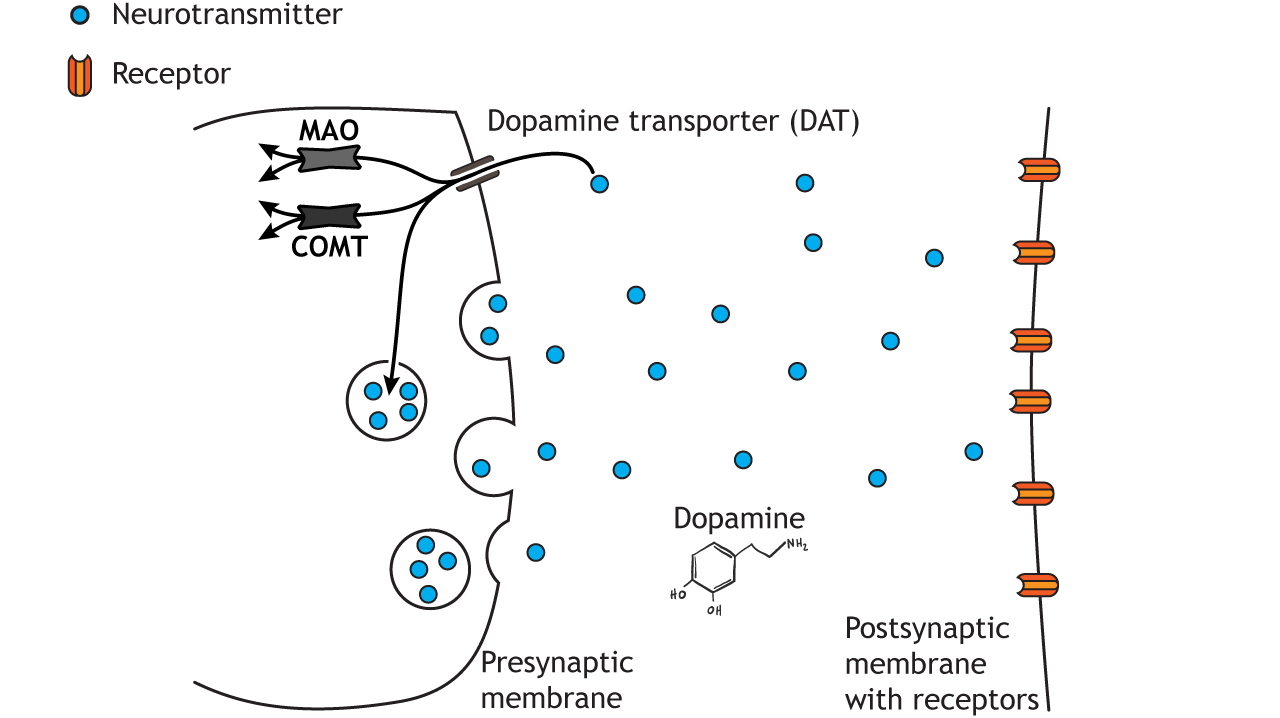B or C E. Enzymes breakdown the neurotransmitters in the synapse.

Neurotransmitter Clearance Foundations Of Neuroscience
Reuptake process by which neurotransmitters are taken back into the synaptic vesicles enzymatic degradation a way of removing excess neurotransmitter from the synapse in which enzymes specific for that neurotransmitter bind with the neurotransmitter and break it down.

. Put another way there are three ways to get rid of a neurotransmitter. View the full answer. After their secretion neurotransmitters flow across the synaptic cleft and then bind to receptors on the receiving cell.
The neuron that secreted the neurotransmitter is the one that absorbs it. Neurotransmitters are removed from a synapse by either degradation or reuptake into the presynaptic nerve terminal. Neurotransmitters are reabsorbed into the presynaptic terminal that released them.
_____ enzymes and _____ into the presynaptic neuron. Physiological Psychology QUIZ 2 WEEK 2 1. The fundamental physiological properties that enable nerve cells are a.
Reuptake- reabsorption of the neurotransmitter into the neuron. So why - as stated in question hints - SSRI Selective Serotonin Reuptake Inhibitors - function by blocking uptake of the serotonin to actually allow serotonin to be present. A neurotransmitter is.
A B or C. How this works is that a signal is sent from the beginning of neuron called the dendrite to the other end called the axon. Its removal can occur by 1 _____ in which the neurotransmitter is chemically _____ in the _____ and 2 _____ in which the neurotransmitter is reabsorbed by a.
At that point information can be sent to other neurons via the release of neurotransmitters. Neurotransmitters are released from the axon and must travel across a. After a neurotransmitter has served its purpose it is removed from the synapse through A.
The mechanisms by which neurotransmitters are removed vary but always involve diffusion in combination with reuptake into nerveterminals or surrounding glial cells degradation by transmitter-specific enzymes or in some cases a combination of these mechanisms. Clearing of the synapse is an essential step in synaptic transmission. In addition to allowing the brain to recycle valuable chemicals it acts to put a brake on signals limiting the amount of time neurotransmitters spend in.
Neurotransmitters are removed from a synapse by degradation and reuptake. Diffusion degradation and reuptake. They transmit information through specialized nerve cells called neurons.
Wait for it to wander away break it apart or put it back in the vesicle. Transport physically removes the neurotransmitter molecule from the synaptic cleft. Expert Answer 1 There are two mechanisms by which neurotransmitters can be removed from the synaptic cleft.
This is accomplished mainly through two processes. The endoneurium wraps around groups of fasicles to form a never. Neurotransmitter transport andor degradation.
Reuptake into the presynaptic neuron D. Diffusion away from the synapse B. Neurotransmitter reuptake allows a neuron to absorb a signaling chemical after it has sent a message so it can be reused.
It is necessary that the neurotransmitter molecule is eliminated after each stimulation event. Enzymatic degradation- destruction of the neurotransmitter with special chemicals. Once in the synapse it must be quickly removed or chemically inactivated in order to prevent constant stimulation of the post-synaptic cell and an excessive firing of action potentials.
In video it is stated that neurotransmitters need to be removed so the subsequent information can be transferred properly. The ability to produce electrical signals that are. Selective serotonin reuptake inhibitor SSRI o Used in treatment of anxiety and depression o Prevents serotonin from being taken up into the presynaptic neuron.
Degradation by an enzyme C. That action must be terminated in order for proper neuronal communication to continue. There are three mechanisms for the removal of neurotransmitter.
The ability to respond to enviromental changes b. A degradation - neurotransmitter is chemically inactivated in synaptic cleft b reuptake - neurotransmitter is reabsorbed by a neurotransmitter transpo. New signals would be unable to propagate if released neurotransmitter was allowed to simply hang around.
If all the sodium leakage channels were removed from the cell membrane of a neuron. There are three mechanisms for the removal of neurotransmitter. 3 ways neurotransmitters can be removed.
There are two main mechanisms by which neurotransmitters are removed from the synapse following an action potential. Once a neurotransmitter is out of reach of its receptors it can NO longer exert an effect Enzymatic degradation the enzyme acetycholinesterASE breaks down acetylcholine in the SYNAPTIC CLEFT degrading neurotransmitter so it can bind. Degradation breaks down the neurotransmitter molecule by enzyme activity.
Some neurotransmitters are removed from the synaptic cleft by special transporter proteins on the pre-synaptic membrane. Diffusion degradation and reuptake. Put another way there are three ways to get rid of a neurotransmitter.
Synapses are the junctions between neurons in the nervous system. Recommended textbook explanations Understanding Psychology.

Neurotransmitter Clearance Foundations Of Neuroscience

Neuroscience Biology Answer Reuptake Degradation Or Diffusion Away From The Synapse After Neurotransmitters Plasma Membrane Neurotransmitters Neuroscience

3 Neurons And Synapses Brain And Behavior David Eagleman Ppt Download

0 Comments